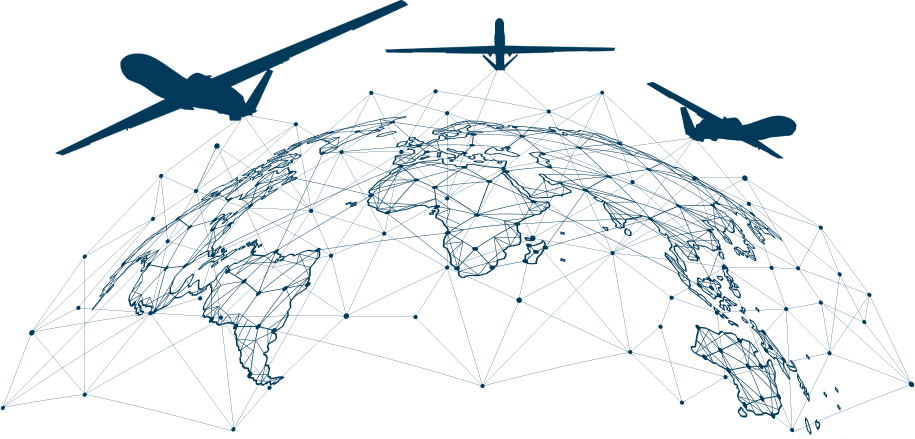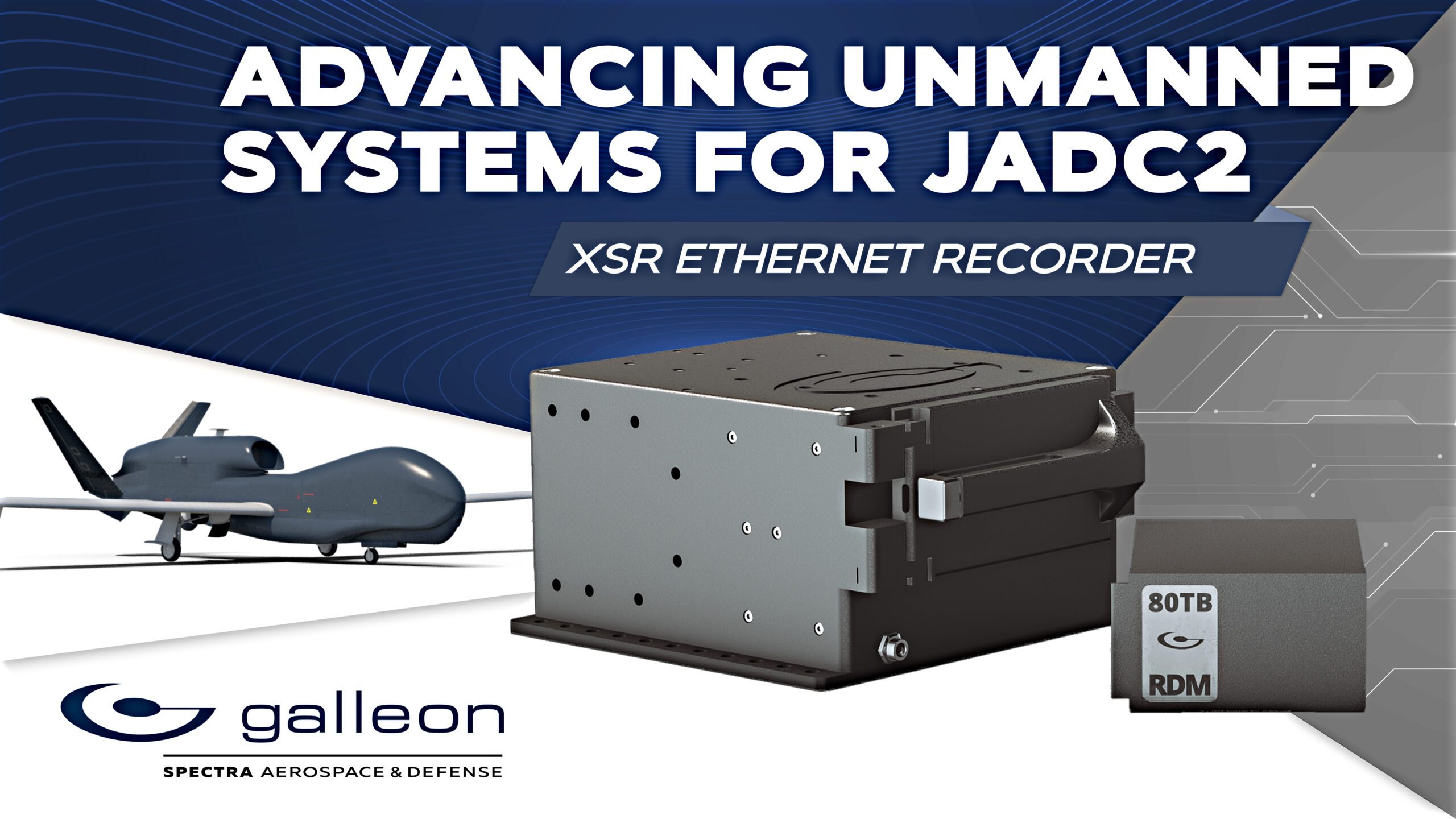Advancing Unmanned Aerial Systems for JADC2: Galleon’s XSR 100GbE Recorder Paves the Way for Future Joint All-Domain Command and Control Capabilities
January 11, 2024
The Department of Defense (DOD) has initiated a significant strategy shift in defense technology with the introduction of Joint All-Domain Command and Control (JADC2). This strategic concept is designed to amalgamate sensors from all military services into a cohesive network, enabling seamless command and control across all domains. The comprehensive data integration offers an edge in decision-making, further enhancing operational effectiveness. Furthermore, it will promote military superiority, enhance agile command and control, foster efficient collaboration and information sharing, and improve the effectiveness of target strikes.
A critical function of JADC2 is the DOD-dubbed “make sense” concept. The process involves a meticulous analysis of data to gain a deeper understanding and predict the operational environment, encompassing the actions and intentions of both adversaries and friendly forces. This concept is accomplished by fusing, analyzing, and validating data from all domains and the electromagnetic spectrum in real time. Within the constant evolution of the field, harnessing the capabilities of artificial intelligence and machine learning is essential, as these technologies play a pivotal role in accelerating decision-making and enhancing operational capabilities in a degraded command and control environment.
Unmanned Aerial Systems (UAS) are set to play a pivotal role in realizing JADC2. UAS, by their design and capabilities, can operate within contested environments and deliver persistent surveillance. This endurance, expected to increase dramatically in the coming years, makes them invaluable in achieving an information advantage. They augment situational awareness, gather intelligence, and support kinetic and non-kinetic operations. To succeed with JADC2 efforts, complex sensor systems, and their operators will demand the flexibility of recording a fusion of countless sensor signals during extended periods.

The components of modern sensor payloads include but are not limited to elements such as optical and radar systems, laser range finders and designators, detection mechanisms for explosive hazards and chemical, biological, radiological, nuclear, and explosives (CBRNE) threats, and devices for sensing and recording environmental data.
The complexities of a system involving numerous sensor operators cannot be overstated, particularly when considering the necessity for on-demand data handling and playback during flight operations, with the requirement to allow for simultaneous parallel command processes carried out by each operator. These systems must be highly rugged with advanced protections for extreme temperatures, shock, and vibration and must adhere to strict requirements for size, weight, and power limitations.
This is where Galleon’s XSR 100GbE Recorder rises to this occasion, simplifying operational complexity and providing a robust solution for these advanced recording and analysis requirements.
|
XSR 100GbE Recorder  Equipped with 80TB Removable Data Module. |
Common Sensor Payloads Offering Parallel Recording, Playback, and Analysis
▸ Video Imaging |
The XSR 100GbE Recorder is a powerful yet compact deployable solution that captures UDP or TCP/IP data at over 2GBytes/s, recording speeds from multiple Ethernet interfaces concurrently. It supports various interfaces, including up to 5x Gigabit Ethernet, 2x 10Gb Ethernet, 1x 40Gb Ethernet, and 1x 100Gb Ethernet. Featuring Intel Xeon processors up to the latest 11th Generation options, backed by up to 96GB of DDR4 SDRAM with ECC, the XSR recorder is a technological marvel.
The XSR’s design leverages COTS Open Architecture modules, ensuring it stays current with technological advancements and offers an effective obsolescence management strategy for a decade or more. The XSR 100GbE Recorder simplifies operational complexity by integrating video processing and data recording into a single recording subsystem. This solution was achieved with two Line Replaceable Units (LRUs) – a video processor and recorder, and an Ethernet recorder. Together, these units support all the use cases required for the system.

Galleon’s innovative solution for operator screen recording optimizes disk space while maintaining image clarity for post-mission reviews. Moreover, Galleon’s recorders can be used for data processing in addition to recording data. These capabilities allow the system to process data before recording, optimize the recorded data set, and simplify post-mission analysis and debriefing.
The XSR 100GbE Recorder is operational in several countries worldwide, with operators benefitting from the ease of operation and fast offload provided by Galleon’s recording solutions. Galleon’s recorders, NAS, and processing systems are utilized on similar surveillance systems. Each system has a unique architecture, and Galleon has assisted with various aspects based on the system’s engineering requirements.
As we look towards the future of UAS technology, we invite you to explore how the XSR 100GbE Recorder can enhance your operation and see how it will become a significant contributor to the JADC2 ecosystem. Its robust design, high performance, and versatility make it a reliable solution for today’s challenges and a scalable solution for tomorrow’s demands. If you’d like to learn more, or would like to schedule a demonstration of the XSR 100GbE Recorder, let’s connect.
The XSR Product Family is fully-equipped with NIAP-Approved Dual-Layer Software Full Disk Encryption (SWFDE) & Hardware Full Disk Encryption (HWFDE) for Data-At-Rest.
XSR 100GbE Recorder Product Page
Have questions or would like a demo? Let’s connect.



